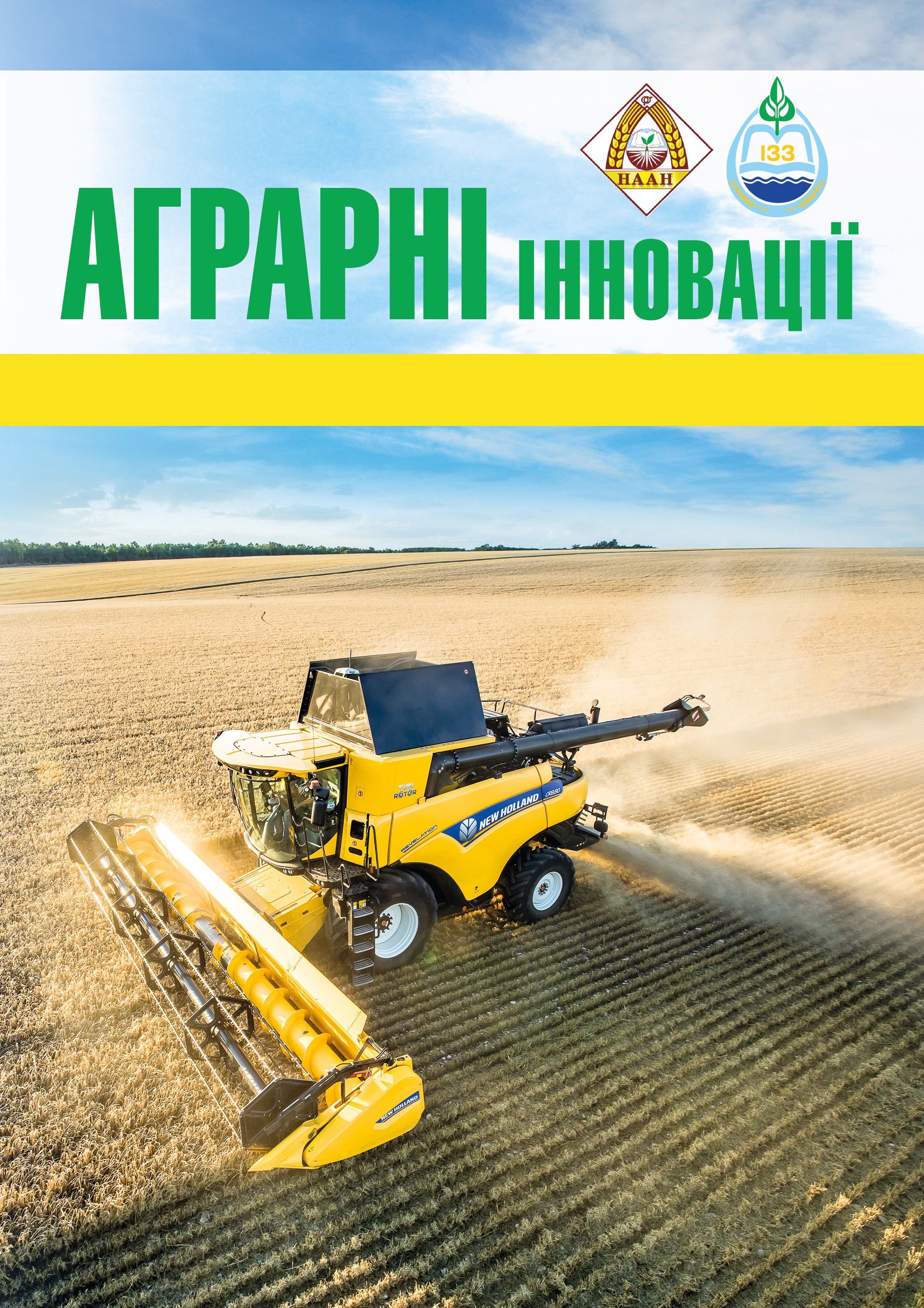Formation of elements of crop structure by corn hybrids for silage under the influence of macro and microfertilizers
Abstract
The aim is to determine the influence of macro and microfertilizers on the formation of crop structure elements by maize hybrids for growing on silage. Methods. The research was conducted in 2019–2021 at the Limited Liability Agricultural Company «Korobivsky Poultry Farm» in the Andrushivskyi district of the Zhytomyr region. The experiment was repeated four times. Soil – common (ordinary) chernozem medium loamy. Placement of options is systematic. The area of the accounting plot is 184 m2. Agricultural techniques for growing corn for silage were generally accepted for the conditions of the Right-Bank Forest-Steppe of Ukraine, except for the factors was studied. Results. The application of macrofertilizers and the use of microfertilizers at different stages of organogenesis had a positive effect on the growth and development of plants of medium-early and medium-ripe hybrids of corn. The use of N90Р60К60 and N120Р90К90 provided an increase the weight of the whole plant by 12.7–30.8%, and microfertilizers by 0.7–2.8%, compared to the variants without their introduction. Under the influence of macrofertilizers, the share of leaves and stems in the total weight of the plant decreases by 0.3-0.8%, and from the use of microfertilizers by 0.1-0.3%. When N90Р60К60 and N120Р90К90 are applied, the share of grain in the total structure of plants increases by 0.3–1.2%, and from the use of microfertilizers by 0.1–0.3%, compared to the variants without their introduction. The use of macrofertilizers reduces the dry matter content by 0.3–1.3% compared to the control and the use of microfertilizers did not have a significant effect on the dry matter content in individual organs and in general in maize plants. Conclusions. A high correlation was found between the dry matter content of the whole plant and grain (r = 0,94), of bract plus cob and cobs (r = 0,91), stems (r = 0,88) and leaves (r = 0,87). An increase in individual productivity of maize plants was established on variants with N120Р90К90 application and YaraTera Tenso Cocktail seed treatment (0.15 kg/t) and maize spraying in the phase of 3-5 leaves of YaraVita Kombiphos (3 l/ha), which has a positive effect on yield growth green and dry mass of the studied hybrids.
References
2. Грабовський М.Б. Агротехнологічне обґрунтування вирощування кукурудзи та сорго цукрового для виробництва біогазу. Дисертація на здобуття наукового ступеня доктора с.-г. наук. ДУ Інститут зернових культур НААН України, Дніпро, 2020. 425 с.
3. Сатановська І. П. Вплив обробки насіння та позакореневих підживлень на біометричні показники рослин кукурудзи. Корми і кормовиробництво. 2013. Вип. 75. С. 62–67.
4. Господаренко Г. М. Агрохімія мінеральних добрив. Київ, Науковий світ, 2003. 136 с.
5. Грабовський М. Б. Ефективність застосування мінеральних добрив у одновидових та сумісних посівах сорго цукрового та кукурудзи. Техніка і технології АПК. 2018. № 8–9 (107). С. 21–24.
6. Грабовський М.Б., Грабовська Т.О., Городецький О.С., Курило В.Л. Формування продуктивності кукурудзи на силос залежно від фону мінерального живлення. Зрошуване землеробство. Херсон, 2019. Вип. 71. С. 37–40.
7. Грабовський М. Б., Федорук Ю. В., Правдива Л. А., Грабовська Т.О. Вплив рівня мінерального живлення на ріст, розвиток та водоспоживання рослин сорго цукрового та кукурудзи в одновидових та сумісних посівах. Таврійський науковий вісник. 2018. Вип. 103. С. 27–35.
8. Мокрієнко В. А. Мінеральне живлення кукурудзи. Агроном. 2009. № 2. С 102–104.
9. Марчук І.У., Макаренко В.М., Розстальний В.Є., Савчук А.В. Добрива та їх використання. Київ, 2002. 256 с.
10. Уманець Н. О., Гуляєв Б. І. Фізіологічні особливості та стійкість генотипів кукурудзи до дії стресових чинників. Фізіологія рослин в Україні на межі тисячоліть: Збірник наукових праць ІФРГ НАН України. 2001. Т.1. С. 340–355.
11. Щокин В. Система комплексного удобрения. Агрохимия. 2002. № 9. С. 14–16.
12. Сичук Л. Виробництво біопалива: вплив мінеральних добрив та ширини міжрядь на продуктивність цукрового сорго. Цукрові буряки. 2012. № 4. С. 15–16.
13. Гаврилюк В.М. Кукурудза в вашому господарстві. Київ, 2001. 232 с.
14. Лебідь Є. М., Циков В. С., Пащенко Ю. М. Методика проведення польових дослідів з кукурудзою: методичні рекомендації. Дніпропетровськ. 2008. 27 с.
15. Основи наукових досліджень в агрономії: Підручник. За ред. В. О. Єщенка. Вінниця: ПП «Едельвейс і К», 2014. 332 с.
16. Ничипорович А. А. Фотосинтетическая деятельность растений в посевах. Москва, Издание АН СССР, 1961. 136 с.
17. Надточаев Н. Ф., Володькин Д. Н., Абраскова С. В. Содержание и выход сухого вещества в зависимости от сроков сева и густоты стояния разноспелых гибридов кукурузы. Кукуруза и сорго. 2012. № 3. С. 28–33.
18. Сатановська І. П. Накопичення сухої речовини середньостиглого гібрида кукурудзи Моніка 350 МВ залежно від впливу метеорологічних факторів. Матеріали VII Міжнародної конференції : Кормовиробництво в умовах глобальних економічних відносин та прогнозованих змін клімату. Вінниця, 24–25 вересня 2013 р. С. 52–53.






